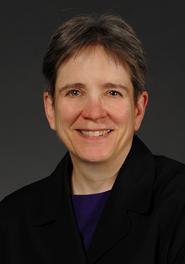
Lydia Hamessley, professor of music, presented a talk titled “Elizabethan Music Then and Now: Music in Paul Green’s The Lost Colony (1937)” at the international conference New Elizabethans 1953-2013: Nation, Culture, and Modern Identity, that coincided with the 60-year anniversary of the coronation. The conference was held June 13-15 in London, UK.
Hamessley’s presentation focused on the play The Lost Colony which opened on Roanoke Island, N.C., in 1937 supported by the WPA and the Federal Theatre Project. This play is the centerpiece of an Elizabethan industry of sorts on Roanoke Island. This outdoor pageant commemorated the 350th anniversary of the founding of the first English colony in North America.
Financed by Sir Walter Raleigh, the colony ultimately failed; the colonists vanished, leaving only a trace of their fate: they inscribed the name of a Native American tribe on a post, presumably signaling their newfound home. Prominent southern playwright Paul Green set this compelling, still unsolved mystery as a symphonic drama, a term he coined to describe his integrated use of speech, dance, pantomine, poetry and music.
The play opened to critical acclaim in The New York Times, and the music was repeatedly singled out for praise. The play has been in continuous production since 1937 until the present, excluding years during WWII, and it holds a noteworthy place in the history of musical theatre.
Focusing on the redemptive power of the New World, the play emphasizes the English identity of Americans. Thus, its music is an amalgamation of Elizabethan hymns, carols, ballads, ballets; liturgical music of Byrd, Tallis, Tye; well-known tunes such as “Greensleeves,” “Agincourt,” “All in a Garden Green.”
Green shaped the musical score within the context of two larger musical movements of the early to mid-20th century. He wrote The Lost Colony at a time when composers and musicians sought to identify a distinctly American style, looking especially to folk music. Green participates in this political/cultural debate stating, “the old English music [in The Lost Colony is] the folk song and hymn tunes of our musical heritage.” Green’s choices were also made against the backdrop of the burgeoning early music movement which was fueled by an upsurge in critical editions of Elizabethan music.
